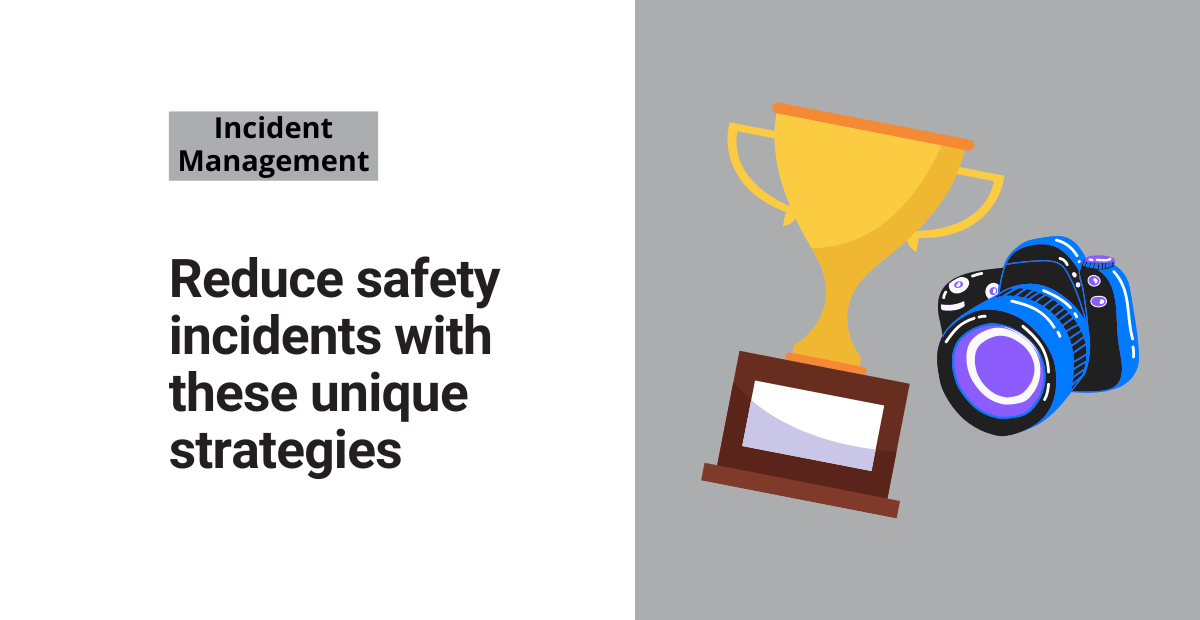There are occasions when we need to get very creative at work in order to reduce safety incidents.
Maybe, you’ve had several incidents in a row. You’ve gone back to the basics and still haven’t made any significant improvements.
You’re asking yourself: “what more can I possibly do?”
You need to start thinking outside the box.
We have, for years, been grinding away at the basics of safety. But sometimes you may need to do something that is not basic or standard to tackle the issues unique at your site.
I want to share a few strategies you can implement to reduce safety incidents across your operation. These may not fit everyone, and some may not be fan favorites. However, as the EHS professional, it’s on you to deliver to your team what works for you.
Culture survey
The first thing that I would like to suggest is conducting a culture survey with your workers. If you don’t have this process in place, it’s a good way to discover where you’re at with your culture.
This is also a really great way to discover some major risks at the company and/or site you may not otherwise know about.
The first step is to compile your survey and decide: what do you want to know?
Make sure you get the data you need to improve your company culture and reduce safety incidents. There is no point in having a survey with useless data.
If you need help getting started, use this free culture survey template:
Free template!
Build a safety culture survey using this Excel template from our free resource library.
I highly recommend that you make your culture survey anonymous, although you don’t have to if you want to follow up with individual responses.
Most of the time, if people absolutely know it’s anonymous, they’ll volunteer to fill it out; especially if they like you enough to help you out.
You need to do what you say you’’ll do. If you tell the employees and management that you’ll take the information and create some great changes—then do it! If you tell them their responses will stay anonymous, then don’t tell anyone who wrote “that recommendation.”
Incentive programs to reduce safety incidents
This topic is somewhat considered taboo for several companies. That’s because OSHA came out with some direction several years ago about incentive programs to reduce safety incidents. I highly recommend that you read the direction here.
Employees want to be incentivized to do things (yes, sometimes more than just their paycheck). The direction I would take, to stay compliant, would be to incentivize employees to complete leading indicators.
Some examples of incentives you might offer include:
- Best safety observation of the month
- Most observations of the month
- Correcting a safety issue
Another idea is to incentivize your safety committee members on audit findings. For example, buy lunch for the team, but give the person with the most (legitimate) findings a special meal from the place where you get lunch.
You’ll almost always see a direct correlation between incentivizing your employees and reducing your risk and injuries.
THIS IS VERY IMPORTANT: Do not incentivize employees for not having injuries.
The biggest problem with that approach is that it creates a culture where employees may not report real injuries and incidents. In that case, you’re just deferring safety incidents until they’re too severe for workers to avoid reporting.
Safety moments
Doing safety moments is a relatively well-known strategy within the EHS community to reduce safety incidents, but there are still many companies who could benefit from this type of recognition program.
The basic concept is that you start every meeting, at all levels of the organization, with a quick piece of information related to safety. Here are some examples of safety moment topics:
- Workplace safety tips
- Recent safety initiatives or upgrades
- Shoutouts or recognition of a positive safety action by an employee
- Updates on new changes in the EHS department
The process is simple. Prior to the meeting, someone gives a safety topic and very quick discussion around it. Think of this as a very fast toolbox talk. Then, the meeting proceeds as usual.
The thought behind this process is to communicate that safety is important at all levels of the company, not just within the EHS department. This also keeps safety on the minds of all employees by repeatedly discussing it throughout the day.
Industrial athlete programs to reduce safety incidents
There are nearly 250,000 musculoskeletal injuries annually according to the National Safety Council.
Implementing a prevention program can go a long way in reducing safety incidents that result in these types of injuries. Your program may include things like:
- Safety training on how to identify potential musculoskeletal hazards
- Dedicated team stretching prior to work
- Small workouts throughout the day to keep muscles active
If you haven’t already looked into implementing this type of program, I’d highly recommend that you do.
While you don’t need to do these activities to reduce your injury rates, it certainly won’t have a negative effect on safety outcomes.
As I said, these recommendations may not work for every professional or company. But if you’re already struggling to keep incident rates down and to make impactful improvements, these may be worth a shot if you want to try a unique approach.

Jason Hathcoat, CSP
Jason is a seasoned EHS professional with more than 20 years of experience working in health and safety. He currently serves as a Senior EHS Leader at Trane Technologies.




